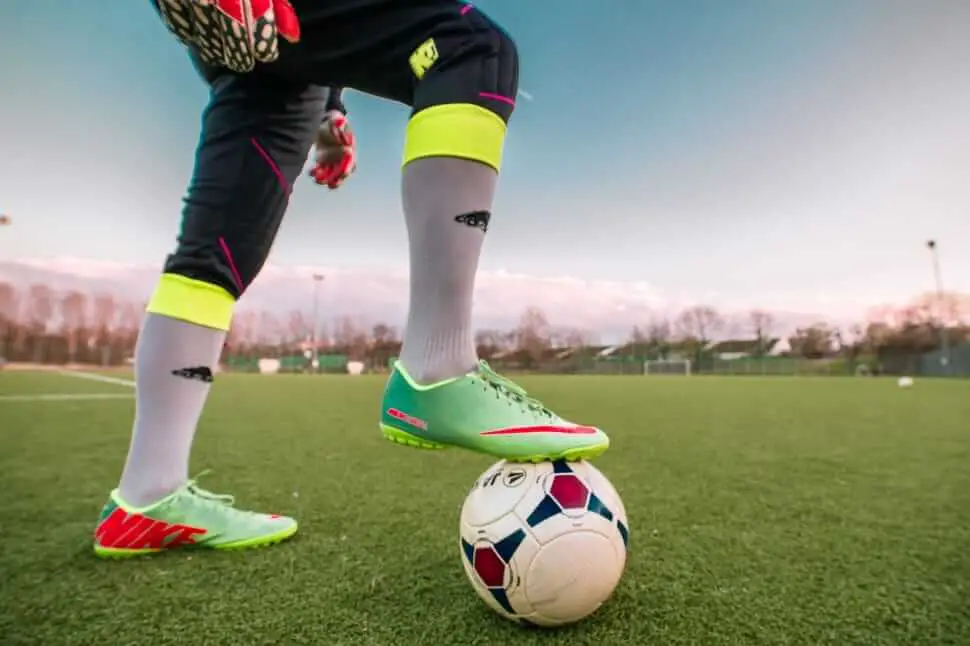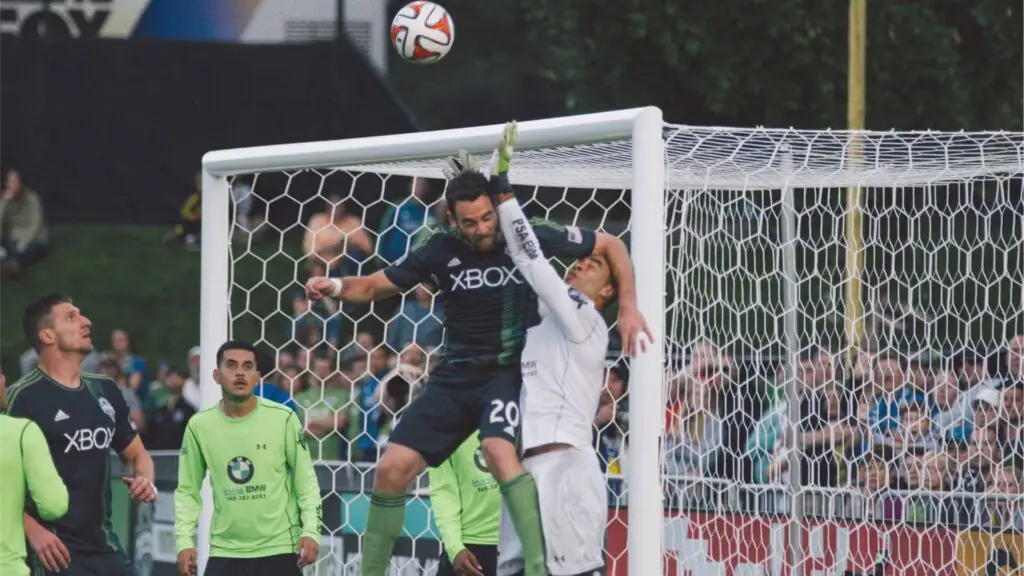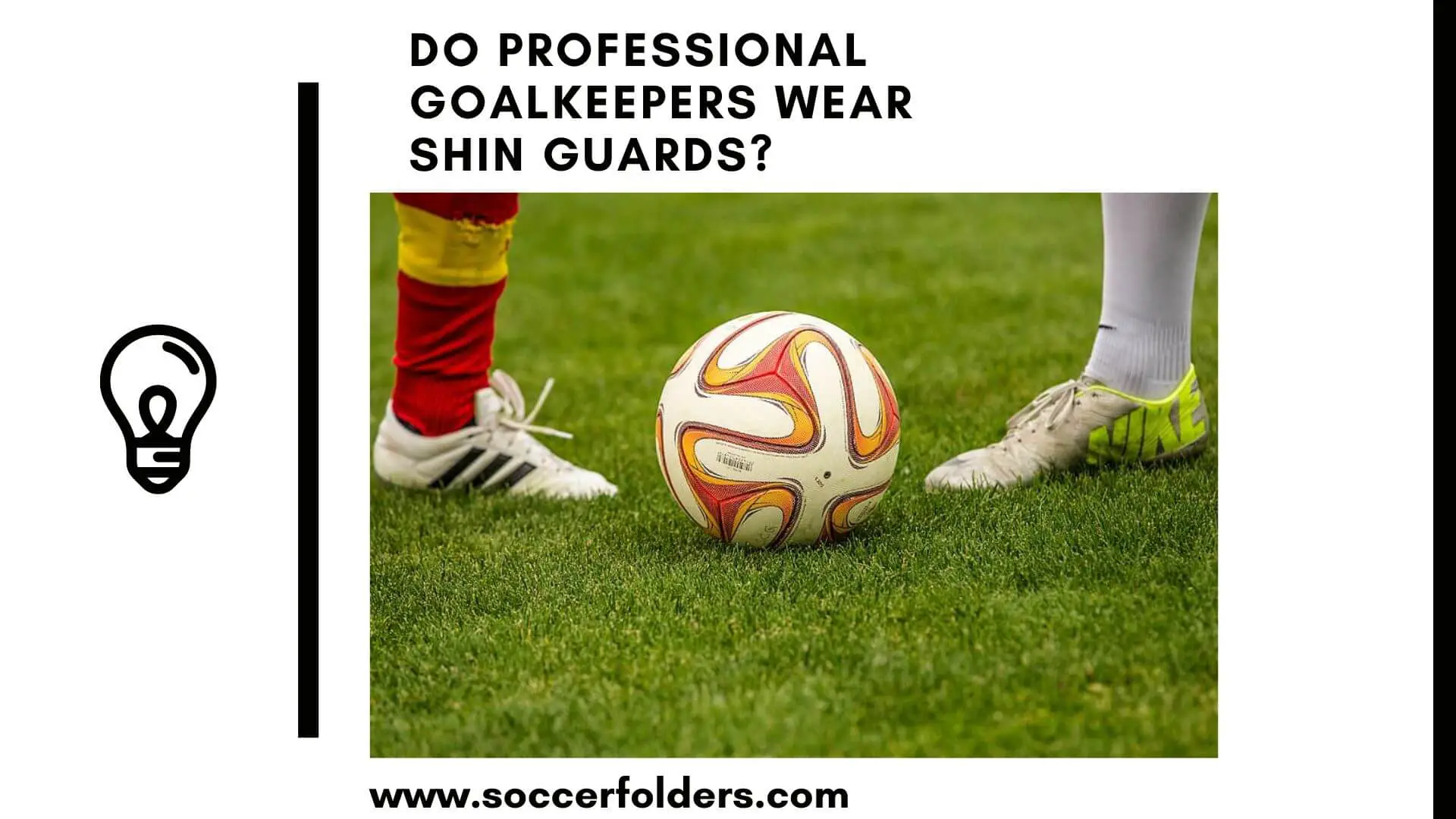As a soccer fan, you might have often wondered whether professional goalkeepers wear shin guards.
After all, the goalkeeper is the last line of defense and faces some of the game’s most aggressive and powerful shots. It’s understandable to wonder how they protect themselves from potential injuries.
In this article, we will explore whether professional goalkeepers wear shin guards, the reasons behind their decision to wear or not wear them, and the benefits and drawbacks of each choice.
Navigation
Do Professional Goalkeepers Wear Shin Guards?
The answer is that professional goalkeepers wear shin guards, but it’s not mandatory. Unlike field players who are required to wear shin guards at all times, goalkeepers have the option to wear them or not. However, most goalkeepers choose to wear them for added protection.
Why do some Goalkeepers choose not to wear Shin Guards?

Some goalkeepers choose not to wear shin guards because they believe it limits their movement and agility. Shin guards can be bulky and uncomfortable, and they can restrict the range of motion of the goalkeeper’s legs.
This can impact their ability to move quickly, jump high, and make sudden, explosive movements.
Additionally, some goalkeepers argue that shin guards can affect their grip on the ball. The padding on the shin guard can interfere with the grip of their gloves, making it harder for them to hold onto the ball.
In certain situations, this can be the difference between a save and a goal.
Finally, some goalkeepers believe that shin guards can increase their risk of injury. Shin guards can cause extra weight and pressure on the legs, leading to fatigue and potential muscle strains.
Additionally, the hard shell of the shin guard can cause injuries if the goalkeeper collides with another player.
Why do most Goalkeepers choose to wear Shin Guards?
Despite the potential drawbacks of wearing shin guards, most goalkeepers still choose to wear them for added protection.
The risk of injury is too high, and the benefits of wearing shin guards outweigh the drawbacks for most players.
Shin guards offer an additional layer of protection for the goalkeeper’s legs, which can help prevent injuries from hard shots, collisions with other players, and even accidental contact with their own teammates.
While shin guards may be uncomfortable and bulky, the added protection they provide is crucial for a goalkeeper, whose job is to keep the ball out of the net at all costs.
Additionally, modern shin guards are designed to be lightweight and streamlined, minimizing the impact on the goalkeeper’s range of motion and agility.
Many professional goalkeepers wear custom-made shin guards that are tailored to their specific needs, ensuring that they have the right balance of protection and mobility.
You can also read my article on how to pick shin guards for soccer here.
What are the drawbacks of not wearing Shin Guards?
While some goalkeepers choose not to wear shin guards, there are significant drawbacks to this decision.
Without shin guards, the goalkeeper’s legs are exposed to potential injury from hard shots, collisions with other players, and even accidental contact with their own teammates.

You can also read more about sin guard rules in this article by Azcentral.
Injuries to the legs can be debilitating for a goalkeeper, impacting their ability to move quickly and make explosive movements.
Additionally, without shin guards, the goalkeeper is at a higher risk of sustaining cuts and bruises on their legs. These injuries may not be as severe as a muscle strain or a broken bone, but they can still impact the goalkeeper’s ability to play effectively.
Finally, the decision not to wear shin guards can have long-term consequences for a goalkeeper’s health. Repeated exposure to hard shots and collisions can lead to chronic pain, arthritis, and other long-term health issues.
Final Thoughts
In conclusion, while professional goalkeepers have the option to wear shin guards, most choose to do so for added protection.
While shin guards may be uncomfortable and bulky, the benefits of wearing them far outweigh the drawbacks.
Shin guards offer an additional layer of protection for the goalkeeper’s legs, which is crucial in preventing injuries from hard shots, collisions, and accidental contact.
Additionally, modern shin guards are designed to be lightweight and streamlined, minimizing the impact on the goalkeeper’s range of motion and agility.
As a soccer fan or amateur player, you have to understand the choices that professional goalkeepers make when it comes to protecting themselves on the field.
While shin guards may not be the most glamorous piece of equipment, they are a crucial component in keeping goalkeepers safe and allowing them to perform at their best.
Don’t forget to read those tips on how you can choose shin guards in soccer here.
Hope you gained value from this article.
You can also read: What does a goalie wear to protect their legs?


